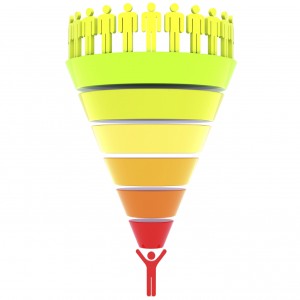Modern marketing is all about using technology to more efficiently and effectively produce revenue. Tapping into the “digital body language” of a lead interacting with a company’s content (websites, outbound emails, forms, etc.) provides a reservoir of opportunity for optimizing many marketing efforts.
Digital body language is the compilation of the digital activity produced by an individual as he or she interacts with your content. At a fundamental level, it is transactional data that is captured by marketing automation software. The data – which many times is referred to as an implicit profile – is captured by tracking scripts that are placed on a company’s owned websites and transmitted emails. Email opens, clicks, or forwards, website and blog visits, and Google searches are examples of activity that produce quantifiable digital body language.
Analyzing the digital body language data within the marketing automation tool accelerates leads through the buying cycle by giving you the opportunities to engage the leads. When leads see value in the information they are interacting with, their needs are being met and their questions are being addressed. Marketing automation software facilitates the alignment of leads’ needs by automatically routing leads to receive optimal messages – content – based on digital body language.
As leads interact with categorized content, their activity is analyzed and their digital body language is observed. Content (including whitepapers, web pages, and blog posts) can be categorized on factors like need, persona, and buying cycle and then tagged within the marketing automation software. As leads engage with the tagged content, the marketing automation software watches the interaction, “showing” various implicit perspectives of the leads (e.g., needs, persona, and buying cycle).
Related Class: Marketing Automation Fundamentals for Customer Engagement

Once interest is “shown,” leads can be segmented. Segmenting on this implicit profile, as well as explicit data points like company size and job role, significantly optimizes lead flow and conversion. Segmented leads can be engaged through a variety of marketing programs that have been set up previously. Examples of programs could include nurture campaigns, webinars, email updates, and website ads powered by tools like AdFocus and Bizo.
The more finite the segmenting, the better the lead engagement. Conversely: the more finite the segmentation, the more effort involved in the setup. Starting at a macro level and moving to a more granular level produces immediate results that can be improved on over time.
As leads engage with content, their digital body language provides insights into how they are moving along the buying cycle, when they are ready to be turned over to the sales organization, and even where they are “stuck” in the buying cycle. Through the marketing automation software’s logic and monitoring capabilities, modern marketers can systemically watch what leads are interested in and can continue the conversation based on those specific interests.
Looking to implementing an effective lead scoring program can help you see which leads are most active and, more importantly, which of them are ready for a sale? Tune in to Mary Wallace's Online Marketing Institute's class, Lead Scoring Program Fundamentals. Enroll today to learn how to adopting a lead scoring program results in a faster and more effective sales process and ultimately, open up more revenue opportunities for your business.